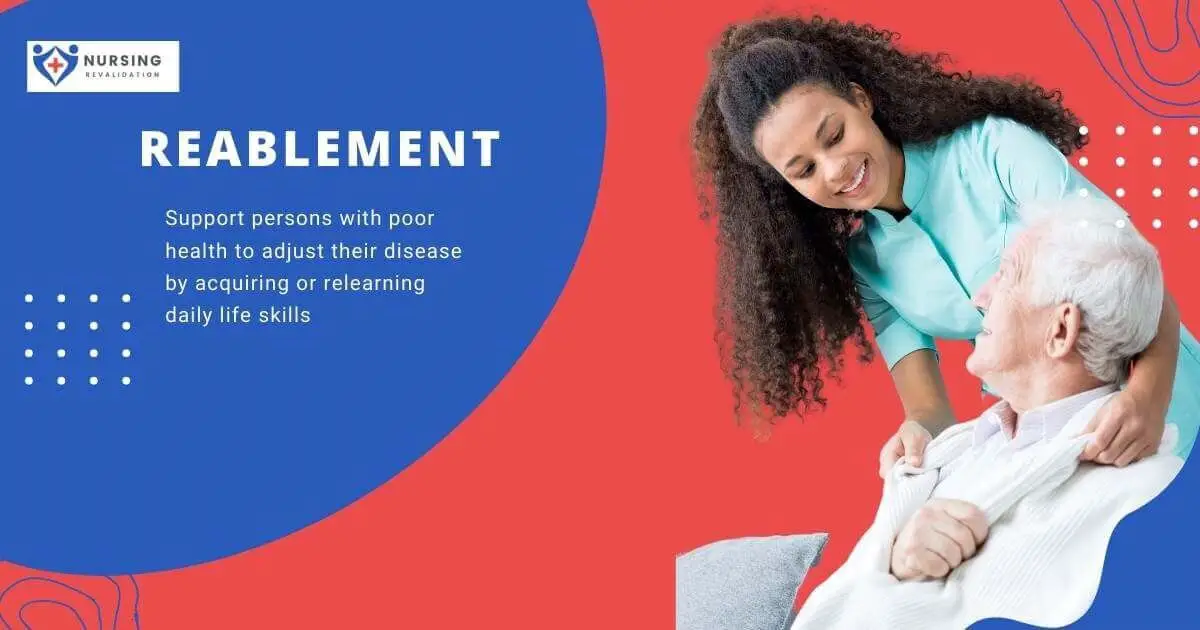Reablement refers to services that support persons with poor physical or mental health adjust to their disease by acquiring or relearning daily life skills. In this blog, you will get brief introduction to aim, benefits, principle, and outcome of reablement.
What is reablement?
Reablement is a short-term intensive service provided to those recovering from illness or injury at home (or in a care facility). Modern medicine is often able to cure their diseases, whether it be after surgery or an attack of terrible illness.
For many people, though, the healing process does not finish when they leave the hospital. Many patients will require differing lengths of aftercare, with varying levels of intensity.
Aim of Reablement?
Reablement is a goal-oriented service that assists people in returning to and remaining in their own homes or communities. Reablement services are centered on user-defined goals that promote independence and choice while also lowering the need for future services.
What are the two concepts of enablement?
The renablement has the following characteristics:
- Making a positive difference in the therapeutic connection
- Considering the person as a whole
- Learning facilitation
- Valuing an individual’s strengths
- Implications and support for decision-making, as well as an expansion of options
What are the elements of reablement?
Encourage self-reliance
Losing one’s independence can be devastating, especially for the elderly, who may find it more difficult to reclaim it. Physical and psychosocial functions are included in independence.
Individual assessment and goal-setting based on the individual to boost confidence and happiness
A person’s independence necessitates more than just assistance to enable them to remain in their existing residence and capacity. Clients should be assisted in maintaining and expanding their activities in accordance with their capacities.
Delivery of services that encourage active (rather than passive) participation in meaningful activities
This involves greater independence and the ability to recall, plan, and accomplish the needed activities and duties of daily living. Activities that a person can perform for themselves should not be taken over by service delivery. Service delivery should not take over activities that a person can do for themselves.
To maximize freedom, encouraging and enabling positive risk-taking
Concentrate on what the individual can accomplish (rather than what they can’t) and what they need to be able to do in order to live a high-quality life.
An ‘outcome emphasis’ to reduce the amount of continuous support necessary. An outcome-oriented approach, for example, necessitates regular reviews of the support to guarantee continuing progress toward goals as well as the level and duration of service provided.

Models of delivery
In general, there are two types of rehabilitative services:
Intake and assessment service:
Assist a wide range of users, including those referred from hospitals and the community.

Hospital discharge service:
Principally helps those who are being discharged from the hospital.
What are the benefits of reablement?
According to studies, those who have received rehabilitative services regard them favourably and recognise the benefits of increased confidence, functional ability, mobility, independence, and well-being. Reablement initiatives have also been found to promote independence in people who previously received traditional home care services, extending their ability to live at home and reducing the amount of traditional care required.
This reinforces up the idea that as part of the review or re-assessment process, everyone should be examined for reability. For the individuals, increased independence and improved quality of life are two advantages of the reablement strategy.
Who need reablement?
If a person is being considered for home care, reablement should be evaluated first if it has the potential to promote independence and well-being. Reablement should be considered as part of the review or re-assessment process if the person already gets home care.
Some communities may be hesitant to provide reablement services to persons with specific diseases, such as dementia or terminal illness, but the choice to provide the service should be based on the needs of the individual rather than a medical diagnosis or condition.
Nursing revalidation provides interactive courses for Reablement. Join the course and start providing basic life support to others.


